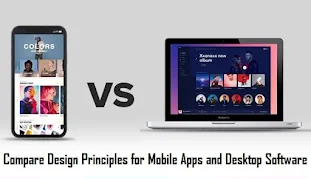Compare Design Principles for Mobile Apps and Desktop Software
|
Design Principle |
Mobile Apps |
Desktop Software |
|
Screen
Real Estate |
Limited space; prioritize essential features. |
Larger space; can accommodate more features on the screen. |
|
Navigation |
Emphasize simple, gesture-based navigation. |
Utilize menus, toolbars, and keyboard shortcuts for navigation. |
|
Touch
vs. Mouse Input |
Designed for touch gestures and taps. |
Primarily designed for mouse clicks and cursor interaction. |
|
Responsive
Design |
Must be responsive to various screen sizes and orientations. |
Adaptability is important but generally less constrained. |
|
Interaction
Patterns |
Swiping, tapping, and gestures are common. |
Mouse clicks, hover, and right-click interactions are prevalent. |
|
Consistency |
Maintain consistency in UI elements and patterns. |
Consistency across the application is crucial for user familiarity. |
|
Contextual
Awareness |
Utilize device sensors for context-aware features. |
May rely less on sensors but should still consider user context. |
|
Offline
Functionality |
Consider offline functionality due to potential connectivity issues. |
Often assumes a more reliable internet connection. |
|
Multitasking |
Users often switch between apps frequently. |
More focus on multitasking within the application or with other
software. |
|
Performance |
Optimize for lower processing power and limited resources. |
Can leverage higher processing power and resources for complex tasks. |
